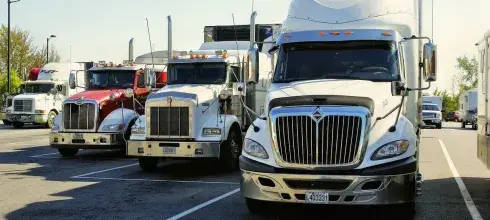Interstate vehicle shipping has become an essential service for millions of Americans who need to transport car to another state for relocations, vehicle purchases, seasonal moves, or other life transitions. The process can seem complex for first-time customers, but understanding the step-by-step approach to professional auto transport services USA makes it straightforward and stress-free. Whether you're moving cross-country for work, purchasing a vehicle from a distant seller, or managing seasonal residence changes, this comprehensive guide walks you through every stage of interstate car shipping from initial planning through successful delivery. Professional car shipping companies have streamlined their processes to make ship my car to another state as simple as possible while maintaining the safety standards and service quality that protect your valuable investment throughout the journey.
Step 1: Assess Your Interstate Transport Needs
Begin by clearly defining your specific transport requirements, including your vehicle type, origin and destination locations, preferred timing, and budget constraints. This assessment forms the foundation for all subsequent decisions and helps ensure you select appropriate services that meet your unique needs.
Vehicle evaluation involves documenting your car's make, model, year, condition, and any modifications that might affect transport requirements or pricing. High-value vehicles, classic cars, or modified automobiles may benefit from enclosed auto transport, while standard passenger vehicles typically ship safely via open carriers.
Timeline determination requires understanding your flexibility around pickup and delivery dates, as well as any hard deadlines that might necessitate expedited service. Standard interstate transport typically takes 3-10 days depending on distance, while expedited service can reduce timing for premium pricing.
Route assessment involves identifying any potential challenges including rural pickup or delivery locations, urban access restrictions, or seasonal weather considerations that might affect service availability or pricing along your specific corridor.
Budget planning should consider not just transport costs but also related expenses including temporary transportation needs at your destination, vehicle preparation requirements, and potential storage fees if timing doesn't align perfectly with your availability.
Service preference evaluation helps determine whether you prioritize cost savings, convenience, speed, or maximum protection, as these priorities guide decisions about service levels, carriers, and booking strategies throughout the process.
Step 2: Research and Compare Car Shipping Companies
Professional provider research represents the most critical step in ensuring successful interstate transport, as your choice of car shipping company directly impacts service quality, reliability, and overall experience. The best auto transport companies combine competitive pricing with proven track records and professional service delivery.
Licensing verification should be your first step when evaluating potential providers. All legitimate interstate transport companies must maintain current USDOT and Motor Carrier numbers that can be verified through the Federal Motor Carrier Safety Administration database at safer.fmcsa.dot.gov.
Insurance coverage review ensures providers carry adequate protection for your vehicle's value and your peace of mind. Standard liability insurance typically ranges from $750,000 to $1 million, with cargo insurance varying based on service type and vehicle value. Request proof of insurance and understand coverage limitations.
Customer review analysis provides insights into actual service experiences, but focus on reviews that discuss specific aspects including communication quality, delivery timing, vehicle condition upon arrival, and problem resolution when issues arise. Look for patterns rather than isolated incidents.
Service comparison should evaluate not just pricing but also included services, insurance coverage, communication capabilities, tracking systems, and customer support quality. Professional providers offer transparent pricing with detailed service explanations.
Company credentials including Better Business Bureau ratings, professional association memberships, and industry certifications indicate commitment to professional standards and customer service excellence that translate to better service experiences.
Step 3: Obtain and Compare Car Shipping Quotes Online
Car shipping quotes online provide convenient access to competitive pricing while enabling comprehensive comparison shopping from multiple providers. However, obtaining accurate quotes requires providing complete and honest information about your specific requirements.
Information accuracy ensures quote precision, as incomplete or incorrect details often lead to price adjustments when carriers conduct detailed assessments. Provide accurate vehicle specifications including make, model, year, operational status, and any modifications that might affect transport.
Multiple provider quotes enable market research that identifies competitive pricing ranges and service quality differences. Obtain quotes from at least 3-5 reputable providers to understand market rates and available options for your specific route.
Service level comparison should consider total value rather than focusing solely on lowest price quotes. Compare included services, insurance coverage, delivery timeframes, communication quality, and customer service alongside pricing to identify best overall value.
Quote validity periods vary among providers, with most estimates remaining valid for 7-14 days. Understanding quote expiration helps plan your research timeline while avoiding rushed decisions or losing favorable pricing due to market changes.
Binding versus estimate clarification ensures you understand whether quotes represent firm commitments or preliminary estimates subject to change. Professional providers offer binding quotes based on accurate information while explaining factors that might affect final pricing.
Step 4: Select Your Service Options
Service selection involves choosing specific transport options that align with your priorities, budget, and vehicle requirements. Understanding available options helps optimize your transport experience while managing costs effectively.
Transport type selection between open and enclosed carriers represents the primary service decision. Open transport provides reliable, cost-effective service for most vehicles, while enclosed transport offers premium protection for luxury cars, classics, or high-value automobiles at 30-50% premium pricing.
Door to door auto transport versus terminal service affects convenience and cost. Door-to-door service provides maximum convenience by handling pickup and delivery at your specified locations, while terminal service offers cost savings for customers willing to coordinate drop-off and pickup.
Timing options include standard service with flexible scheduling versus expedited service for urgent needs. Standard interstate transport accommodates reasonable flexibility while expedited service provides faster delivery at premium pricing for time-sensitive requirements.
Insurance options may include supplemental coverage beyond standard carrier insurance, particularly important for high-value vehicles or customers seeking additional peace of mind. Review coverage options while understanding deductible amounts and claim procedures.
Additional services might include vehicle preparation assistance, detailed condition documentation, enhanced communication, or specialized handling for modified vehicles. Professional providers offer various service enhancements that can improve your transport experience.
Step 5: Book Your Interstate Transport Service
Booking confirmation involves reviewing and executing transport contracts that specify all service details, pricing, insurance coverage, and terms and conditions. Professional providers offer clear, detailed contracts that protect both customer and carrier interests.
Contract review should include careful examination of all terms including pricing, service specifications, pickup and delivery procedures, insurance coverage, and cancellation policies. Ask questions about any unclear provisions before signing agreements.
Payment processing typically involves modest deposits with final payment due upon delivery. Professional providers accept multiple payment methods while maintaining secure processing systems that protect customer financial information.
Scheduling coordination establishes pickup and delivery windows that accommodate your availability while recognizing operational realities of interstate transport. Flexible scheduling often results in better pricing and service availability.
Communication preferences should be established during booking, including preferred contact methods, update frequency, and any special coordination requirements. Professional providers adapt their communication approach based on customer preferences.
Documentation organization involves gathering vehicle registration, insurance information, spare keys, and any relevant warranty or lease agreements that may affect transport arrangements. Having documents organized facilitates smooth service execution.
Step 6: Prepare Your Vehicle for Interstate Transport
Vehicle preparation ensures smooth pickup operations while protecting your interests throughout the transport process. Proper preparation demonstrates cooperation with transport providers while preventing complications or disputes.
Thorough cleaning enables accurate condition assessment during pre-transport inspection, helping identify existing damage while protecting against false damage claims. Clean vehicles also photograph better for documentation purposes.
Personal property removal represents a mandatory requirement, as transport companies are not licensed to ship personal belongings and assume no liability for items left in vehicles. Remove all personal items, valuables, and loose objects that could shift during transport.
Mechanical preparation involves ensuring your vehicle starts reliably, steers properly, and brakes effectively for safe loading and unloading operations. Address mechanical issues before transport to prevent complications or additional charges.
Fuel level management requires maintaining approximately one-quarter tank of gas - sufficient for loading operations while avoiding excess weight that increases costs and creates safety concerns.
Alarm system preparation includes disabling car alarms and providing clear instructions for any special operational procedures or security systems that drivers should understand during transport operations.
Accessory security involves removing or securing loose items including custom wheels, spoilers, antennas, or decorative elements that might be damaged during transport. Document any items that cannot be removed but require special attention.
Step 7: Document Vehicle Condition
Professional documentation protects your interests by creating comprehensive records of your vehicle's condition before transport begins. This documentation becomes essential if damage claims arise during or after transport.
Photographic documentation requires taking detailed pictures from multiple angles including front, rear, sides, interior, and close-ups of any existing damage, scratches, or imperfections. Use good lighting and include timestamps when possible.
Written condition reports should document existing damage, mechanical issues, or cosmetic imperfections in detail. Professional providers typically use standardized forms, but customers should maintain their own records for additional protection.
Mileage recording establishes baseline odometer readings that help verify appropriate vehicle handling during transport. Document mileage clearly and include this information in your personal records.
Special feature documentation includes noting any modifications, custom equipment, or unique characteristics that require special attention during transport. Clear documentation prevents misunderstandings about vehicle specifications.
Witness involvement can strengthen documentation if family members or friends observe and verify vehicle condition during your preparation process. Additional witnesses provide corroborating evidence if disputes arise.
Digital storage ensures that documentation remains accessible throughout transport and beyond. Store photos and documents in multiple locations including cloud storage, email, and physical copies for maximum protection.
Step 8: Coordinate Pickup Logistics
Pickup coordination involves working with transport providers to schedule convenient vehicle collection while ensuring smooth operations that prevent delays or additional charges.
Location accessibility requires ensuring carriers can safely access your pickup location with large transport trucks typically measuring 75-80 feet in length. Standard carriers need adequate maneuvering space and overhead clearances of at least 13-14 feet.
Alternative arrangements may be necessary if your primary location presents access challenges. Identify suitable nearby alternatives such as shopping centers, schools, or other large parking areas where carriers can operate safely.
Scheduling flexibility helps accommodate carrier route optimization while meeting your availability requirements. Providing 2-3 day windows often results in better pricing than demanding specific pickup dates.
Contact coordination establishes clear communication protocols including preferred contact methods, backup contact information, and availability during pickup windows. Ensure carriers can reach you for coordination and any necessary adjustments.
Preparation completion includes final vehicle cleaning, documentation photography, personal property removal, and mechanical checks that ensure your car is ready for professional transport services.
Step 9: Monitor Transport Progress
Transport tracking provides visibility into your vehicle's progress while enabling coordination of delivery logistics and other activities around expected arrival timing.
Professional tracking systems offer real-time GPS location updates through online portals or mobile applications that show current location, estimated arrival times, and any route or schedule modifications.
Communication updates from professional providers include proactive notifications about pickup confirmation, transport progress, weather delays, and delivery scheduling without requiring customer inquiries.
Progress coordination involves monitoring transport status while preparing for delivery including arranging your availability, preparing delivery location access, and organizing payment methods for completion.
Problem communication requires immediate contact with transport providers if concerns arise about timing, routing, or other factors that might affect your delivery plans or vehicle safety.
Documentation maintenance involves keeping all transport-related paperwork accessible including contracts, insurance certificates, condition reports, and contact information for easy reference if needed.
Step 10: Coordinate Delivery and Final Inspection
Delivery preparation involves ensuring your availability and preparing the delivery location for smooth vehicle return that completes your interstate transport successfully.
Location preparation includes ensuring carrier access to your delivery address while clearing any obstacles that might impede safe unloading operations. Urban customers should verify parking availability and access restrictions.
Availability confirmation requires coordinating with carriers to establish specific delivery timing while maintaining reasonable flexibility that accommodates transport realities and traffic considerations.
Payment preparation involves having final payment ready in the form specified in your transport contract, whether cash, certified check, or electronic payment. Professional providers communicate payment requirements clearly during booking.
Inspection procedures require comparing your vehicle's condition to pre-transport documentation to identify any damage that may have occurred during interstate transport. Take time for thorough inspection before signing delivery receipts.
Documentation completion includes signing bills of lading and delivery receipts while noting any concerns or damage on delivery documents. This documentation protects your interests and establishes clear delivery records.
Problem resolution involves immediate communication with transport providers if damage or other issues are discovered during delivery inspection. Professional providers maintain responsive problem-solving procedures that protect customer interests.
Step 11: Post-Delivery Follow-Up
Service completion involves final documentation review, feedback provision, and any necessary follow-up activities that ensure complete satisfaction with your interstate transport experience.
Final documentation review ensures you have all necessary paperwork including completed contracts, delivery receipts, and condition reports that provide complete records of your transport experience.
Feedback provision helps transport providers improve their services while assisting future customers through honest reviews of your service experience including both positive aspects and areas for improvement.
Insurance coordination may be necessary if damage occurred during transport, requiring prompt communication with both transport providers and your personal insurance company to initiate claims procedures.
Record keeping involves storing all transport-related documentation in accessible formats for future reference, insurance purposes, or potential follow-up requirements.
Provider relationship maintenance includes maintaining contact information for quality transport providers who delivered excellent service, as future transport needs may benefit from established professional relationships.
Additional Interstate Transport Considerations
Cross country car shipping presents unique challenges including extended transport times, diverse weather exposure, and complex route coordination that require specialized expertise and careful planning.
Military car shipping involves special considerations for service members including flexible scheduling for deployment changes, coordination with military benefits, and understanding of unique military relocation requirements.
Seasonal car transport patterns affect pricing and availability, with summer months commanding premium pricing while off-season periods offer potential savings for customers with flexible timing.
Regional considerations include understanding geographic challenges such as mountain passes, desert conditions, urban access restrictions, and weather patterns that might affect transport along your specific route.
State requirements may include different registration procedures, emissions standards, or documentation requirements at your destination state that require advance planning and coordination.
Achieving Interstate Transport Success
Successful interstate car transport results from thorough planning, realistic expectations, professional provider selection, and active participation in the process from preparation through delivery. Understanding each step helps ensure smooth execution while preventing common problems.
Professional guidance from experienced transport providers helps navigate complex decisions while ensuring appropriate service selection that meets your specific requirements within your budget constraints.
Quality focus on selecting reputable providers with proper licensing, adequate insurance, and proven track records ensures reliable service delivery that protects your valuable vehicle throughout interstate transport.
The step-by-step approach to interstate car shipping eliminates uncertainty while providing clear guidelines for successful transport experiences that meet customer expectations while maintaining vehicle safety and protection throughout the journey.
FAQs About Shipping a Car to Another State
How do I ship my car to another state?
Start by researching transport companies, getting quotes, booking a service, preparing your vehicle, and coordinating pickup and delivery.
How much does it cost to transport a car to a different state?
State-to-state transport usually costs between $500 and $1,200, depending on distance, vehicle type, and service level (open vs enclosed).
How long does interstate car shipping take?
Delivery times typically range from 2 to 7 days. Longer distances or remote pickup/drop-off locations may take slightly more time.
What’s the difference between open and enclosed transport?
Open carriers are more affordable and widely used, while enclosed carriers provide added protection—ideal for high-value or classic cars.
What documents are required for interstate car transport?
You typically need your ID, vehicle registration, proof of insurance, and the transport agreement. Check with the carrier for any specific requirements.








